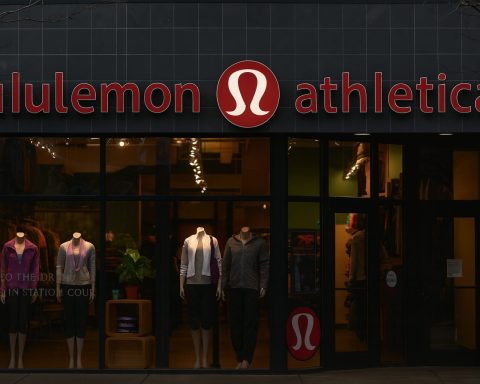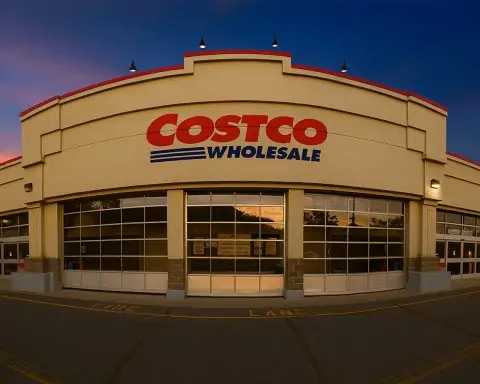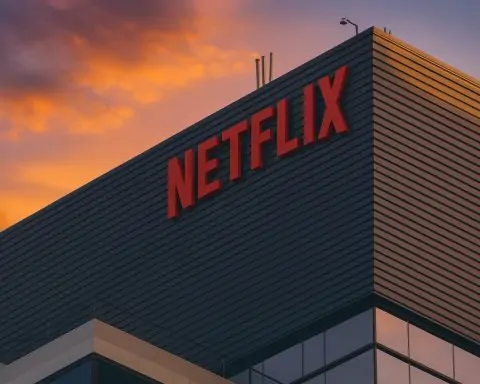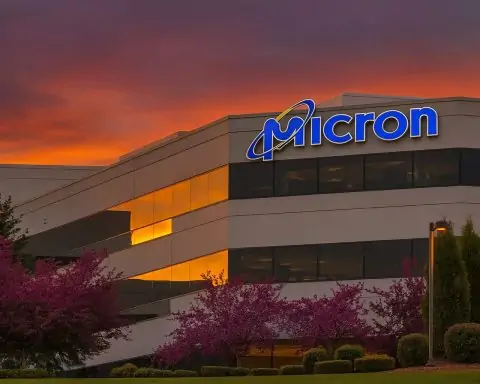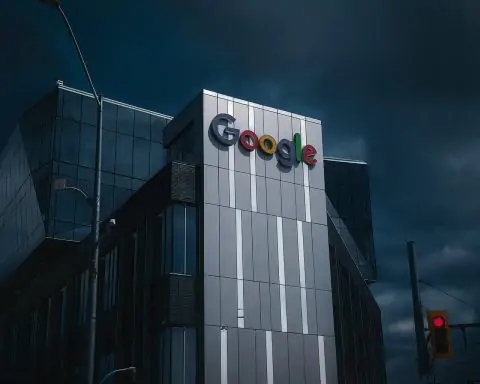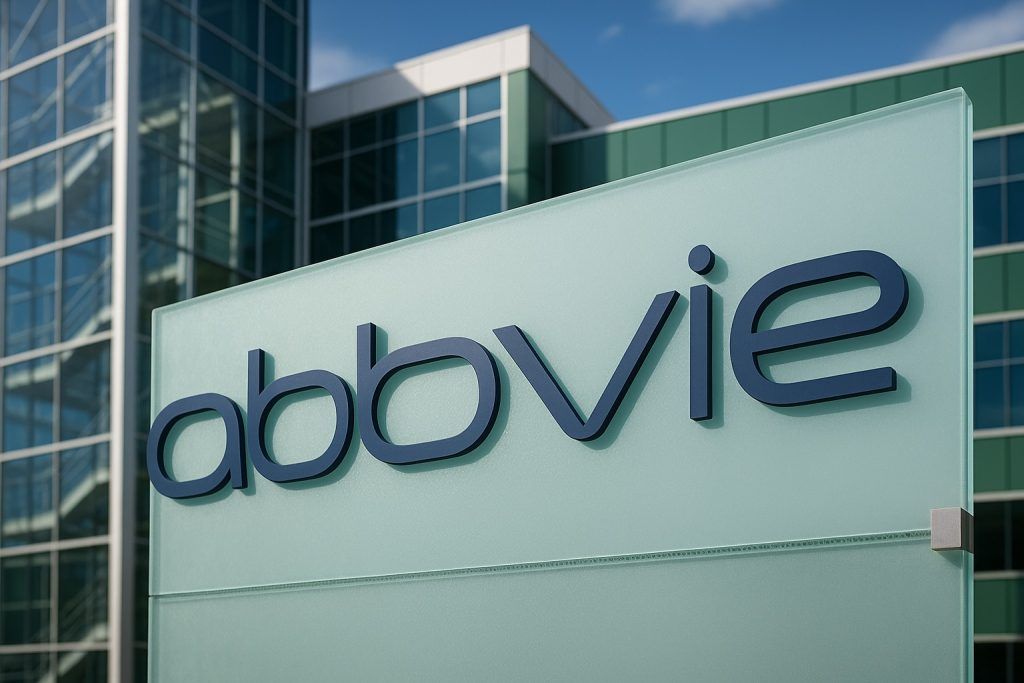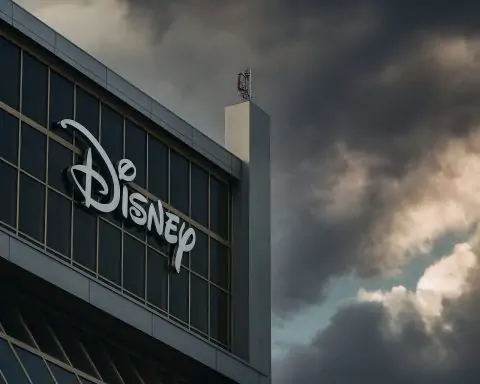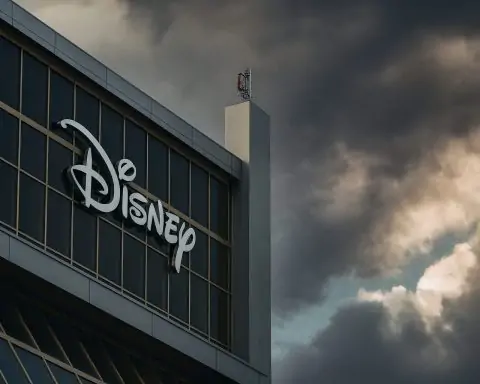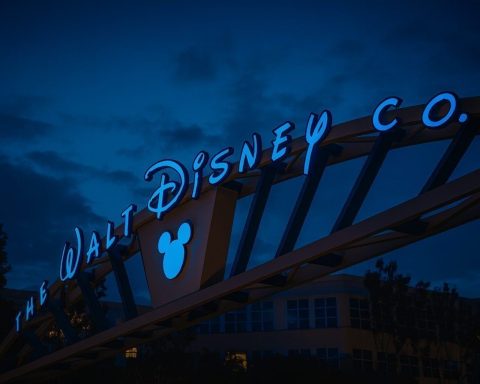- Disney’s Channels Go Dark: As of October 31, 2025, Disney-owned networks – including ESPN, ABC, FX, National Geographic, Disney Channel and more – have been blacked out on YouTube TV after the companies failed to reach a new carriage agreement by the Oct. 30 deadline [1] [2]. This means over 20 popular channels vanished for YouTube TV’s 10+ million subscribers when the contract expired at 11:59 PM ET on Oct. 30 [3] [4].
- Dueling Blame Game: Both sides are publicly blaming each other for the impasse. YouTube’s blog accused Disney of using “the threat of a blackout… as a negotiating tactic to force deal terms that would raise prices on our customers,” and said Disney’s move “harms our subscribers while benefiting [Disney’s] own live TV products, including Hulu + Live TV and Fubo,” according to an official YouTube statement [5]. Disney shot back that “Google’s YouTube TV has chosen to deny their subscribers the content they value most by refusing to pay fair rates… Google is using its market dominance to undercut industry-standard terms we’ve negotiated with every other distributor,” a Disney spokesperson said, calling on YouTube to pay “fair rates” for channels like ESPN and ABC [6] [7].
- Subscriber Compensation and Alternatives: YouTube TV has promised a $20 monthly bill credit to customers if Disney content remains off the platform for an extended period [8] [9]. In the meantime, affected viewers must seek alternatives to watch live sports and shows – e.g. local ABC stations can be viewed with an over-the-air antenna, and Disney’s own Hulu + Live TV or Fubo (both of which still carry the channels) are being promoted as substitutes [10] [11]. Notably, YouTube TV’s advantage over cable is that frustrated users can cancel or pause their subscription in minutes and switch to a competitor [12] [13] (more on how below).
- Core Dispute – Carriage Fees: The standoff centers on how much YouTube TV must pay Disney per subscriber for the rights to carry its channels. Industry insiders report that YouTube wants a rate comparable to what traditional cable giants (like Comcast or Charter) pay, leveraging YouTube TV’s growing scale to negotiate a better price [14]. Disney, however, insists YouTube TV pay “industry-standard” fees in line with distributors of similar size, arguing it shouldn’t get a special discount just because it’s owned by $3 trillion-market-cap Google [15] [16]. With YouTube TV rapidly gaining subscribers even as cable TV shrinks, the question of what counts as a “fair” rate has become a flashpoint.
- Context – Rising Prices and Cord-Cutter Frustration: This clash comes amid broader tension in the live TV streaming market. YouTube TV’s monthly price has nearly doubled since launch – now $82.99 per month – causing frustration for many subscribers [17]. The service has also seen channel lineup turbulence: it previously lost regional sports networks (Bally Sports) and nearly lost NBC channels in past negotiations [18]. Each price hike or channel blackout risks users canceling – a relatively easy process for cord-cutters, unlike cable [19] [20]. YouTube TV’s latest price increase and the prospect of losing marquee channels like ESPN is expected to trigger a wave of cancellations if unresolved [21] [22].
- Disney’s Strategic Moves: The dispute is happening as Disney bolsters its own streaming TV ventures. Just this week, Disney closed a deal to merge its Hulu + Live TV operations with FuboTV, creating a combined live-TV streamer with nearly 6 million subscribers (now the 6th-largest U.S. pay-TV provider) – of which Disney holds ~70% ownership [23] [24]. This new alliance gives Disney a huge stake in a YouTube TV competitor and may strengthen its negotiating position. Analysts speculate that Disney’s willingness to let YouTube TV go dark is partly because it can funnel frustrated viewers toward Hulu Live/Fubo, where Disney earns revenue directly [25]. In fact, Disney’s statement explicitly notes Google’s power and plugs the value of Disney’s content (like live sports) that are now exclusive to other platforms [26] [27].
- Stocks and Industry Impact: The carriage fight underscores challenges in media as audiences shift online. Disney’s stock (NYSE: DIS) has barely budged this year – up only about 1% year-to-date – reflecting investor wariness as its traditional TV business struggles [28]. Alphabet (Google’s parent, NASDAQ: GOOGL), by contrast, has seen shares surge roughly 49% in 2025 amid booming digital ad revenue [29]. Alphabet just reported YouTube’s ad sales climbed 15% last quarter [30] [31], highlighting the platform’s strength even as it pushes back on higher content fees. Notably, FuboTV’s stock (FUBO) skyrocketed ~29% on Oct. 29 after the Disney-Hulu Live/Fubo merger news [32], showing optimism for Disney’s deeper play in streaming sports. If the YouTube TV blackout drags on, it could hurt Disney’s TV revenues (lost subscriber fees and advertising reach) and slow YouTube TV’s growth as customers flee – a lose-lose that puts pressure on both sides to compromise.
Disney Channels Go Dark on YouTube TV: What Happened?
After weeks of warnings, the YouTube TV–Disney carriage agreement expired at midnight ET on October 31, 2025 without a new deal. Within minutes, YouTube TV pulled all Disney-owned networks from its lineup [33] [34]. This blackout spans over 20 channels, including major broadcasters and cable staples: the local ABC stations, the entire ESPN family (ESPN, ESPN2, SEC Network, ACC Network, etc.), Disney Channel and Disney Junior, FX and FXX, National Geographic and Nat Geo Wild, Freeform, and more [35] [36]. In practical terms, if you tried to tune into SportsCenter on ESPN or your local ABC morning news on YouTube TV right now, you’d find nothing but a message that the channel is unavailable.
The cutoff came after down-to-the-wire negotiations failed to produce an agreement or even a temporary extension. (Notably, short-term extensions have saved YouTube TV from blackouts in some recent disputes, such as with NBCUniversal a month ago [37]. This time, however, no extension was reached by the deadline [38].) The result: millions of YouTube TV subscribers woke up on Oct. 31 to find that some of the most-watched channels on television had suddenly vanished from their service.
Both companies swiftly issued public statements in the late hours of Oct. 30, essentially dueling press releases to sway public sentiment. YouTube TV’s team expressed disappointment and urged Disney to reconsider:
“We know this is a frustrating and disappointing outcome for our subscribers and we continue to urge Disney to work with us constructively to reach a fair agreement that restores their networks to YouTube TV,” the platform said in a statement, adding that Disney’s decision to pull channels was being used as a “negotiating tactic” [39] [40].
Disney’s camp put the onus squarely on Google (YouTube’s owner), framing the blackout as YouTube’s choice:
“Unfortunately, Google’s YouTube TV has chosen to deny their subscribers the content they value most by refusing to pay fair rates for our channels, including ESPN and ABC… Google is using its market dominance to eliminate competition and undercut the industry-standard terms we’ve successfully negotiated with every other distributor,” a Disney spokesperson said, while assuring fans Disney is ready to resume talks and resolve this “as quickly as possible.” [41] [42]
These sharply worded statements make it clear that this isn’t just a minor tiff – it’s a high-stakes showdown over money, control, and the future of TV distribution. The immediate effect, though, is that YouTube TV customers have lost access to all Disney-owned programming for the first time since the service launched. That includes major sports broadcasts (more on that below), popular kids’ shows, and prime-time network TV. It’s an unsettling moment for cord-cutters who rely on YouTube TV as their cable replacement – and it’s the first real blackout of this scale that the platform has ever experienced.
Why Did Negotiations Fail? Follow the Money
At the heart of this dispute is money – specifically, the carriage fees YouTube TV pays to Disney for the rights to carry its suite of channels. These deals, common in the cable and satellite industry, involve the distributor (here, YouTube TV, owned by Google) paying the content provider (Disney) a certain amount per subscriber. Disney’s networks are among the most expensive: ESPN alone has one of the highest carriage fees in the industry because live sports are so valuable.
According to insider reports, the main sticking point is the rate per subscriber:
- YouTube TV’s position: YouTube, leveraging Google’s clout, believes it should get a deal at least as good as traditional cable giants do [43]. Large cable operators with tens of millions of customers (like Comcast or Charter) often negotiate slightly lower per-subscriber rates due to their scale. YouTube TV has grown fast – reportedly now over 10 million subscribers, making it one of the largest pay-TV distributors in the U.S. [44]. It ostensibly argued that its fees to Disney should be on par with what the biggest cable/satellite providers pay, otherwise its customers would be paying unfairly high costs for Disney channels. Also, YouTube has pushed for shorter-term contracts so it can renegotiate more frequently, rather than being locked into multi-year escalators [45]. This reflects how tech firms like Google prefer flexibility, given the rapidly evolving streaming market.
- Disney’s position: Disney contends that YouTube TV is trying to use its Big Tech muscle to demand an unreasonably cheap deal. From Disney’s perspective, YouTube TV – though growing – is still just one of many distributors and should pay standard market rates similar to other TV services of comparable size [46]. Disney argues it has successfully struck fair deals with “every other distributor” and that Google shouldn’t get a special break simply because it has deep pockets [47]. In Disney’s eyes, if Google (market cap topping $3 trillion) is allowed to strong-arm a lower price, it sets a precedent that could undermine Disney’s revenue across the board. Disney also points out that Google’s enormous resources and dominance (in search, ads, YouTube, etc.) give it an unfair advantage in negotiations, accusing Google of trying to “exploit its position… at the expense of [YouTube TV’s] own customers” by risking a channel blackout to get a better deal [48].
In short, YouTube wants to cut costs; Disney wants to protect its pricing power. The gap between those positions has not yet been bridged. Neither side has publicly detailed the exact cents-per-subscriber they’re apart on, but given ESPN’s importance, even a difference of <$1 per sub can amount to tens of millions lost or gained annually.
Another factor likely inflaming tensions: Disney’s competitive interests. YouTube pointedly noted that Disney stands to gain if YouTube TV subscribers get fed up and switch to Disney-controlled alternatives like Hulu + Live TV (which Disney owns majority control of) or Fubo (in which Disney now holds a large stake) [49] [50]. In its blog, YouTube claimed Disney’s hardball stance “benefits their own live TV products, including Hulu + Live TV and Fubo,” implying Disney might be okay with a YouTube TV blackout because it could drive more customers to those rival services where Disney makes money [51]. Disney hasn’t directly responded to that accusation, but it underscores that this isn’t a pure distributor-vs-programmer fight – it’s complicated by the fact that Disney itself is in the live streaming TV business (via Hulu Live, and now Fubo). The competitive overlap likely makes negotiations even more fraught.
To add to the drama, the talks unfolded under the shadow of a recent legal spat. Earlier this year, Disney sued Google after YouTube TV poached a top Disney executive, Justin Connolly, who had overseen Disney’s TV distribution deals [52]. Disney alleged breach of contract (Connolly had just signed a multiyear Disney deal) and claimed Google was gaining insider knowledge for these very negotiations. While Connolly was recused from the YouTube-Disney talks and a court initially denied Disney’s injunction [53], the bad blood spilled into public view. Just two days before the deadline, Disney and Google settled that lawsuit – a move many saw as a positive sign that the companies were clearing roadblocks toward a carriage deal [54] [55]. Indeed, industry watchers thought the settlement “likely bodes well for a new agreement… and avoid blackouts” [56]. But if anything, it appears the core money dispute was still unresolved, and despite that optimistic signal, the deadline passed with no deal.
Impact on Subscribers: Sports Fans and Cord-Cutters Caught in the Crossfire
For the average YouTube TV subscriber, this blackout is more than a corporate squabble – it immediately hits home in terms of lost content. The timing couldn’t be worse for sports viewers: it’s the middle of the NFL and college football season, the NBA is starting up, and the World Series is underway (though baseball is on Fox). Losing ESPN and ABC means:
- No Monday Night Football (ESPN’s NFL games) and no college football on ESPN/ABC. In fact, Disney noted “13 of the top 25 college [football] teams [are] playing this weekend” on its networks [57], games which YouTube TV customers now can’t watch through their subscription. Sports fans are understandably upset – these games are a major reason many subscribe to live TV services in the first place. While Sunday NFL games on CBS and Fox, and Sunday Night Football on NBC, are unaffected, the ESPN blackout is huge: it not only covers Monday Night Football, but also NBA games on ESPN/ABC, college basketball (soon), tennis, golf, and a host of talk shows (SportsCenter, etc.). In short, a big chunk of the sports universe went dark on YouTube TV.
- ABC network programming is gone, which varies by market but includes local news, daytime shows, and popular primetime series (think Grey’s Anatomy, The Bachelor, etc.), plus big events on ABC (awards shows, etc.). While some ABC content can be accessed next-day on Hulu (which is ironic, since Disney also owns Hulu), live viewing is lost. One immediate example: ABC’s Dancing With the Stars finale is coming up, and YouTube TV viewers desperate to watch live might need to find an antenna or borrow a login elsewhere [58].
- Other cable channels: FX and FXX (home to hit dramas and comedies), National Geographic, Freeform, Disney Channel (kids’ programming) – all pulled. That affects everything from children’s cartoons to edgy cable dramas.
In the short term, subscribers have a few options to cope:
- Some content has alternatives: for example, local ABC stations can often be picked up free via a digital antenna in many cities [59]. It’s old-school, but an antenna will get you ABC (and other broadcast networks) in HD for free, if you’re in range of the signal.
- Disney is undoubtedly steering people toward Hulu + Live TV, its own streaming TV bundle which still carries all these channels. Hulu Live is similarly priced (around $76/month) and includes Disney+ and ESPN+ in the package. Likewise, Fubo – a sports-centric streamer that now effectively partners with Disney – carries ESPN, ABC (in most markets), and more, with a free trial for new users. In fact, tech sites have been quick to list alternative services that still have Disney’s channels (e.g. Fubo, Hulu Live, even Sling TV for some channels) for those ready to jump ship [60].
- The truly frustrated might choose to cancel YouTube TV outright. One advantage of a no-contract streaming service is exactly this flexibility: “That’s the beauty of cord-cutting – the ability to ditch a service for a competitor in just minutes,” as one Android Headlines columnist noted [61]. Users can go into their YouTube TV account settings and cancel or pause their membership with a few clicks [62] [63] – no need to call retention departments like with cable. (YouTube TV even lets you pause for up to 6 months, which preserves your DVR recordings while you’re gone [64] [65] – a nice option if you hope the dispute will resolve but don’t want to pay in the meantime.)
Google appears to recognize the risk of customer churn here. By offering a $20 credit if the channels stay dark for a while [66], YouTube TV is effectively giving a ~$20/month discount (their base plan is $82.99/month now) to pacify subscribers. This mirrors what YouTube TV has done in past disputes – for instance, in a 2021 tiff with Disney, they offered $15 off for the outage period. The credit softens the blow, but for many sports fans, missing live games is a bigger deal than saving $20. Social media is already full of furious comments from subscribers debating whether to cancel, especially with big college football matchups looming on ABC/ESPN this weekend.
For now, YouTube TV subscribers are “in the dark” (literally) regarding Disney-owned content. If you’re a YouTube TV user:
- You won’t see ESPN channels or ABC in your guide.
- Your DVR recordings from those channels are likely inaccessible during the dispute.
- If you have upcoming recordings set (say, an NBA game on ESPN), they won’t record since the channel feed is cut.
- You will keep access to other channels on YouTube TV (CBS, NBC, Fox, TNT, CNN, etc. are unaffected). Notably, NBCUniversal just settled a renewal with YouTube TV a few weeks ago with no blackout [67], and YouTube recently renewed deals with Fox and Paramount as well [68] – indicating that Disney is the outlier in reaching an impasse.
The big question for subscribers is how long this will last – and whether to hold tight with YouTube TV (hoping for a fast resolution and pocketing the $20 credit), or jump to a new provider to get their shows and sports back. That, in turn, will likely be determined by the behind-the-scenes negotiations playing out in the coming days.
Disney’s Broader Strategy: Is There an Ulterior Motive?
One reason this clash is particularly newsworthy is that it highlights a power shift in the TV industry. Disney isn’t just a content supplier anymore; it’s also a direct-to-consumer player via streaming. And Google’s YouTube TV isn’t just a dumb pipe distributor; it’s part of a tech behemoth with its own ecosystem. Both are flexing new muscles.
A striking backdrop to the dispute is Disney’s recent deal with FuboTV. On October 29, just two days before the YouTube TV blackout, Disney and Fubo announced the closing of a merger/acquisition that folds Hulu + Live TV (Disney’s live TV streaming arm) into FuboTV [69]. The result is a joint venture where Disney holds ~70% and Fubo’s management runs day-to-day operations [70]. This combined entity instantly becomes a sizable competitor in the live TV space – around 6 million subscribers strong, the sixth-largest U.S. pay-TV provider after the likes of Comcast, Charter, DirecTV, Dish, and YouTube TV [71]. In other words, Disney now effectively owns a controlling stake in a YouTube TV rival.
It doesn’t take a conspiracy theorist to wonder if this influenced Disney’s stance with YouTube. According to a Vulture analysis, Disney’s new Hulu-Fubo alliance “could rival YouTube TV… This deal may be the reason Disney is challenging Google/YouTube, or at least why the company is taking its time in negotiations.” [72] With an expanded live TV platform under its wing, Disney might feel it can play hardball: if YouTube TV won’t pay what Disney wants, Disney can pull the plug and still reach viewers through Hulu Live/Fubo (not to mention traditional cable providers that already pay Disney’s rates). Disney also might calculate that some percentage of YouTube TV customers will now migrate to Hulu Live or Fubo, effectively boosting Disney’s own subscriber counts on those platforms. Indeed, Fubo’s stock soared nearly 30% on the merger news, a sign that investors see upside in Disney backing a dedicated sports streamer [73].
It’s a risky gambit, though. YouTube TV has a large base of customers that Disney would prefer not to lose entirely. The longer Disney channels are off YouTube TV, the more habit changes set in: viewers might find other ways to get content, or just do without. Disney runs the risk of lower ratings for its sports and shows (since ~10 million fewer households can watch them easily), which can hurt ad revenue. Carriage disputes historically tend to be resolved because both sides lose the longer it drags on.
Still, the dynamics are shifting. In the cable era, content owners like Disney usually held the leverage if they had must-have channels (few TV providers could survive without ESPN/ABC). But in this case, YouTube TV is part of Google – a company with vast resources and alternative revenue streams (Google isn’t relying on TV subscriber fees to survive). Google might be willing to endure some cancellations of YouTube TV to avoid setting a costly precedent. And YouTube as a platform is thriving (as noted, YouTube’s ad business is growing briskly [74]), so Google can afford to play hardball on the TV side to keep its bundle attractive in the long term.
It’s also worth noting Disney’s longer-term plans: Disney has hinted at eventually offering ESPN as a standalone direct-to-consumer streaming service (sometimes dubbed “ESPN standalone” or “ESPN OTT”) in the coming years. In fact, Disney’s CEO Bob Iger has explicitly said they are working toward a streaming version of ESPN that cord-cutters can subscribe to without cable. If that’s on the horizon (possibly 2025 or 2026 launch), Disney may be calculating how to maximize current carriage fees while preparing for a future where cable and vMVPD deals matter less. However, until that standalone service exists, Disney still needs distribution partners like YouTube TV to reach broad audiences and monetize its sports rights.
In summary, Disney’s negotiation stance is likely informed by both short-term revenue needs and long-term strategic positioning. Owning a big chunk of Fubo/Hulu Live gives Disney a fallback and perhaps emboldens it to demand more from YouTube. But Disney also must be careful not to alienate fans and partners. It’s a delicate balance: appear tough enough to get what you want financially, but not so intransigent that you burn bridges or drive viewers away for good.
Financial Stakes and Wall Street Reactions
Whenever two corporate giants fight, you can be sure investors are watching closely. In this case, the financial community sees the YouTube TV blackout as part of a bigger story: the transition from traditional TV bundles to streaming, and the question of who will profit in that new world.
For Disney (DIS), the stakes are high. Disney’s stock has been underperforming, up only about 1% year-to-date in 2025 [75], as its TV networks and cable channels face subscriber losses across the industry. The cord-cutting trend means each round of carriage negotiations is crucial – Disney needs to squeeze as much value as possible from a shrinking pool of pay-TV subs to fund expensive sports rights (like the NFL, NBA, college sports). If a distributor as large as YouTube TV drops Disney networks for long, it not only cuts off a revenue stream (Disney reportedly gets roughly $2+ billion annually from carriage fees across all partners [76], though the YouTube TV portion is just one slice), but it could also weaken Disney’s hand in future deals with others. On the flip side, caving to Google’s demands could encourage other distributors to ask Disney for discounts too. It’s a delicate dance financially.
For Alphabet/Google (GOOGL), which owns YouTube TV, the direct monetary impact of this battle is comparatively smaller – Google’s core business is digital advertising (search, YouTube, etc.), and that is booming (YouTube’s ad revenue jumped 15% last quarter, per Google’s latest earnings [77] [78]). In fact, Alphabet’s stock has soared nearly 50% in 2025 on the strength of its tech businesses [79]. So while YouTube TV is strategically important (as Google’s ticket into the living room and TV ad market), the revenue from YouTube TV subscriptions is not a huge piece of Alphabet’s empire. This gives Google some fortitude in negotiations – losing some YouTube TV subscribers or paying rebates isn’t existential for them. Their priority is likely to maintain YouTube TV’s long-term value proposition (a robust channel lineup at a competitive price). If paying Disney’s asking price would force YouTube TV to hike monthly rates significantly, Google might calculate that it’s better to endure a short-term spat than to make their service too expensive and unprofitable. Indeed, one could argue Google is playing the long game: protecting YouTube TV from becoming an overpriced bundle, even if that means some near-term pain.
Wall Street analysts and experts are framing this as a test of the new order. “This blackout underscores the broader strains facing traditional media,” noted Shanthi M., a market commentator, pointing to the “steep decline in [linear TV] ad revenue and a fundamental shift in audience habits as viewers migrate to digital platforms.” [80] In other words, legacy media companies like Disney are scrambling to shore up revenue (hence fighting for every penny in these deals) at a time when their old model is eroding, while tech-backed newcomers (Google’s YouTube, etc.) are ascendant and leveraging their dominance.
Interestingly, FuboTV’s stock (FUBO) got a nice bump from this situation – up ~29% on Oct. 29 when the Disney merger news broke [81] – and over +140% year-to-date in 2025 [82]. That reflects investor optimism that Disney hitching its wagon to Fubo will make that service a stronger competitor in live sports streaming. If YouTube TV stumbles or raises prices, Fubo (and Hulu Live) stand to gain subscribers, which could benefit Disney in a roundabout way since Disney now owns a majority of that combined venture [83]. Essentially, Disney has hedged its bets: if they get a great deal from YouTube, good – more revenue; if talks collapse, they push viewers to a platform they largely control anyway.
So far, the market reaction to the actual blackout news has been fairly muted for the giants. Disney’s share price didn’t dramatically plunge on Oct. 31, nor did Alphabet’s – suggesting investors believe this dispute will be resolved or is not devastating to either business’s fundamentals. However, if the blackout drags on into multiple weeks, analysts might start revising Disney’s earnings forecasts downward (due to lost fees and ad reach), and Google could face questions about YouTube TV’s growth trajectory.
Both companies are also mindful of their reputations. Disney doesn’t want to be seen as alienating fans (there’s already been public backlash when Disney channels went dark on other platforms like Charter Spectrum during a dispute earlier in 2025). Google, for its part, wants YouTube TV to be perceived as a reliable, customer-friendly service – not one that drops networks and sparks subscriber fury. In fact, YouTube’s quick move to offer a $20 credit is as much a PR gesture as a financial one, signaling “We have your back, customers” even as they ask users to bear with the loss of channels [84].
What’s Next? Outlook and Possibilities
The big question on everyone’s mind: When will this end? Historically, most carriage disputes (especially involving must-have content like ESPN) end in a deal, eventually. Neither side truly wants a prolonged blackout:
- Disney risks real damage to its sports viewership and fan goodwill. Prolonged outages can accelerate cord-cutting (if fans decide they might as well drop pay TV entirely rather than switch).
- YouTube TV risks losing subscribers to rivals and harming its reputation as the top cable-replacement service.
Optimistic scenario: A deal could come within days. It’s not uncommon for talks to resume even after a blackout begins. Sometimes one side blinks after seeing consumer anger ramp up. In a similar showdown in September 2025, YouTube TV and NBCUniversal went right up to the deadline and even lapsed into a short extension, but reached an agreement a couple days later, avoiding any long blackout [85]. We could see a repeat here: perhaps over the weekend or early next week, Disney and Google find a middle ground on rates (for example, YouTube agreeing to a moderate fee increase, Disney agreeing to some other concessions). If they compromise, channels could flicker back to life pretty quickly, and YouTube TV would happily remove the $20 credit offer. Customers would be relieved – though perhaps still annoyed by the scare.
Pessimistic scenario: The blackout drags on weeks or even months. Is that realistic? There is precedent – some distributor-network feuds have lasted a long time (for instance, Dish Network and HBO had a notorious blackout that lasted several years). One worrying sign: YouTube TV has already been without Univision’s channels since Sept. 30 after failing to reach a deal, and those Spanish-language channels remain dark over a month later [86]. If Google was willing to let Univision go (a significant loss for Spanish-speaking audiences), it shows they can hold firm. However, Disney’s suite is a much larger portion of the overall TV pie than Univision’s, so it’s harder to imagine YouTube TV soldiering on indefinitely without Disney.
If weeks pass, we might see increasing pressure from outside: sports leagues and advertisers could start leaning on Disney to resolve it (because they want their games seen by as many eyes as possible). Likewise, Google might face questions from regulators or politicians if, say, enough consumers complain – though that’s less likely. One interesting angle: political and legal pressure. During the Univision spat, even a former U.S. president (Donald Trump) publicly blasted the absence of certain channels [87]. Carriage fights can become public standoffs that regulators watch, especially if antitrust issues (Google’s dominance, etc.) are perceived. Disney already tried legal action via the Connolly poaching case, but that’s settled. Still, the longer this goes, the more it could catch the eye of lawmakers worried about consumers losing access to local news or big sports events.
Subscriber behavior will also influence the outcome. If a significant chunk of YouTube TV users cancel service in the next week, that data point might push Google back to the table faster. Conversely, if Disney’s Hulu Live or Fubo don’t see the surge they expected (meaning viewers aren’t migrating en masse), Disney may lose leverage. Both companies will be closely monitoring social media sentiment, cancellation rates, and sign-ups elsewhere.
From a broader perspective, this dispute is a bellwether for the TV industry’s future. It shows that even in the streaming era, we’re not free from the old cable-style fights over channel fees. The term “carriage wars” is becoming part of the streaming lexicon [88]. We’re likely to see more showdowns as contracts with other media giants come up for renewal on YouTube TV and competing platforms (Disney itself will have to negotiate with the likes of Roku/YouTube for Disney+ distribution, etc.). Consumers may feel like they’re back in the middle of corporate tug-of-war, much like cable subscribers were for decades.
For now, if you’re a YouTube TV subscriber, the advice is: stay informed and have a backup plan. If you can’t miss that big game or show, consider a free trial of a competitor or dust off an antenna. Keep an eye on your email and YouTube TV’s official blog for updates – the service will likely alert users the moment a deal is struck (or if protracted, how to claim your $20 credit).
Experts generally believe a resolution will come because the cost of non-agreement is too high on both sides. As media analyst Dan Rayburn quipped about these situations, “eventually the money left on the table forces a handshake – it’s just a matter of time.” (In other words, Disney wants to get paid and Google doesn’t actually want to lose subscribers; they’ll find a number that works.) The question is when and under what terms.
Until then, this Disney–YouTube TV feud will continue to be a flashpoint in the streaming landscape – a sign of shifting power dynamics and the tough battles ahead as old media and Big Tech negotiate the new rules of engagement for television. In the meantime, subscribers are voting with their wallets and eyeballs, and that ultimately will drive the two companies toward a deal.
Bottom line: YouTube TV without ESPN/ABC is a drastically less attractive product, and Disney without YouTube TV’s millions of viewers is a weaker Disney. Both companies know this. So while they duke it out in boardrooms, the safe bet is that your channels will be back – hopefully sooner rather than later – and this blackout will be another footnote in the ongoing evolution of how we watch TV. Until then, keep the remote handy… and maybe that Hulu Live trial at the ready.
Sources:
- Android Headlines – “How to Cancel YouTube TV” (Oct. 31, 2025) [89] [90]
- Awful Announcing – “ESPN, Disney-owned networks go dark on YouTube TV” (Oct. 30, 2025) [91] [92]
- CBS News – “Disney networks off YouTube TV after impasse over new agreement” (Oct. 31, 2025) [93] [94]
- Stocktwits News – “Disney Channels Go Dark On YouTube TV Amid Pricing Dispute” (Oct. 31, 2025) [95] [96]
- TS² Tech (TechStock²) – “Disney Deal Rockets Fubo Stock 29% – What’s Next as Sports Streaming Soars?” (Oct. 29, 2025) [97] [98]
- Vulture/NYMag – “Your Frantic Questions About the Disney-YouTube Dispute, Answered” (Oct. 30, 2025) [99] [100]
References
1. awfulannouncing.com, 2. www.cbsnews.com, 3. ca.news.yahoo.com, 4. www.cbsnews.com, 5. www.cbsnews.com, 6. awfulannouncing.com, 7. www.cbsnews.com, 8. awfulannouncing.com, 9. www.cbsnews.com, 10. www.vulture.com, 11. www.vulture.com, 12. www.androidheadlines.com, 13. www.androidheadlines.com, 14. awfulannouncing.com, 15. awfulannouncing.com, 16. awfulannouncing.com, 17. www.androidheadlines.com, 18. www.androidheadlines.com, 19. www.androidheadlines.com, 20. www.androidheadlines.com, 21. www.androidheadlines.com, 22. www.androidheadlines.com, 23. ts2.tech, 24. www.vulture.com, 25. www.vulture.com, 26. awfulannouncing.com, 27. awfulannouncing.com, 28. stocktwits.com, 29. stocktwits.com, 30. stocktwits.com, 31. stocktwits.com, 32. ts2.tech, 33. awfulannouncing.com, 34. www.vulture.com, 35. www.vulture.com, 36. www.vulture.com, 37. www.vulture.com, 38. www.vulture.com, 39. www.cbsnews.com, 40. www.cbsnews.com, 41. awfulannouncing.com, 42. www.cbsnews.com, 43. awfulannouncing.com, 44. awfulannouncing.com, 45. www.vulture.com, 46. awfulannouncing.com, 47. awfulannouncing.com, 48. awfulannouncing.com, 49. www.cbsnews.com, 50. www.vulture.com, 51. www.cbsnews.com, 52. awfulannouncing.com, 53. awfulannouncing.com, 54. awfulannouncing.com, 55. awfulannouncing.com, 56. awfulannouncing.com, 57. awfulannouncing.com, 58. www.vulture.com, 59. www.vulture.com, 60. www.tomsguide.com, 61. www.androidheadlines.com, 62. www.androidheadlines.com, 63. www.androidheadlines.com, 64. www.androidheadlines.com, 65. www.androidheadlines.com, 66. www.cbsnews.com, 67. www.vulture.com, 68. awfulannouncing.com, 69. ts2.tech, 70. ts2.tech, 71. ts2.tech, 72. www.vulture.com, 73. ts2.tech, 74. stocktwits.com, 75. stocktwits.com, 76. awfulannouncing.com, 77. stocktwits.com, 78. stocktwits.com, 79. stocktwits.com, 80. stocktwits.com, 81. ts2.tech, 82. ts2.tech, 83. ts2.tech, 84. awfulannouncing.com, 85. www.vulture.com, 86. www.vulture.com, 87. www.vulture.com, 88. www.vulture.com, 89. www.androidheadlines.com, 90. www.androidheadlines.com, 91. awfulannouncing.com, 92. awfulannouncing.com, 93. www.cbsnews.com, 94. www.cbsnews.com, 95. stocktwits.com, 96. stocktwits.com, 97. ts2.tech, 98. ts2.tech, 99. www.vulture.com, 100. www.vulture.com

